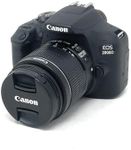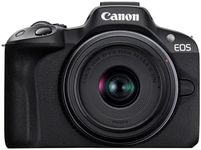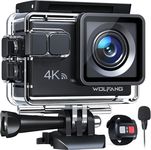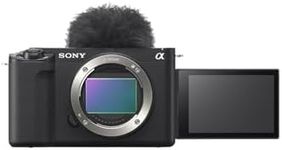Buying Guide for the Best Vlogging Cameras
Choosing the right vlogging camera is crucial for creating engaging and high-quality content. When selecting a camera, consider factors such as video quality, ease of use, portability, and additional features that can enhance your vlogging experience. It's important to match the camera's capabilities with your specific needs and style of vlogging, whether you're filming travel adventures, beauty tutorials, or daily life updates.Video ResolutionVideo resolution refers to the number of pixels that make up the video image, and it's important because it determines the clarity and detail of your footage. Common resolutions include 1080p (Full HD), 4K, and even 8K. For most vloggers, 1080p is sufficient and offers a good balance between quality and file size. However, if you want to future-proof your content or need extra detail for professional work, 4K is a great choice. Consider your platform and audience; if you're primarily on YouTube, 4K can be beneficial, but for Instagram or TikTok, 1080p might be more than enough.
Sensor SizeThe sensor size in a camera affects the image quality, especially in low-light conditions. Larger sensors, like APS-C or full-frame, capture more light and detail, resulting in better image quality. Smaller sensors, like those in compact cameras, are more portable but may struggle in dim lighting. If you're vlogging in various lighting conditions or want a cinematic look, a larger sensor is ideal. For casual vlogging or travel, a smaller sensor might be more convenient and still provide good quality.
Autofocus SystemAutofocus is the camera's ability to automatically focus on subjects, which is crucial for vlogging as it ensures your footage is sharp and clear. A fast and reliable autofocus system is important, especially if you're moving around or filming dynamic scenes. Look for cameras with advanced autofocus features like face detection or eye tracking, which help keep you in focus. If your vlogs involve a lot of movement or you film solo, prioritize a camera with excellent autofocus capabilities.
StabilizationStabilization helps reduce camera shake, resulting in smoother footage, which is particularly important for handheld vlogging or action shots. There are two main types: optical image stabilization (OIS) and digital stabilization. OIS is generally more effective as it physically adjusts the lens to counteract movement. If you plan to vlog while walking or in motion, a camera with good stabilization is essential. For stationary filming, stabilization is less critical but still beneficial.
Audio QualityAudio quality is as important as video quality in vlogging, as poor sound can detract from your content. Built-in microphones vary in quality, so consider cameras with external microphone inputs for better sound. If you're filming in noisy environments or need professional-grade audio, an external mic is a must. Evaluate your vlogging style; if you often speak directly to the camera or capture ambient sounds, prioritize audio features.
PortabilityPortability refers to the ease with which you can carry and use the camera, which is crucial for vloggers who travel or film on the go. Compact cameras are lightweight and easy to transport, making them ideal for travel vlogging. Larger cameras may offer better quality but can be cumbersome. Consider how often you'll be moving around with your camera and choose one that balances size and functionality according to your needs.
Battery LifeBattery life determines how long you can film before needing to recharge or replace the battery. Longer battery life is beneficial for extended shoots or travel vlogging where charging opportunities are limited. Cameras with removable batteries allow you to carry spares, which is useful for long days of filming. Assess your typical filming duration and environment to decide how important battery life is for your vlogging needs.















